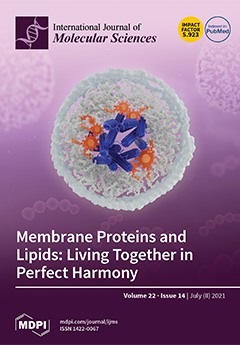Nano Ru-based catalysts, including monometallic Ru and Ru-Zn nanoparticles, were synthesized via a precipitation method. The prepared catalysts were evaluated on partial hydrogenation of benzene towards cyclohexene generation, during which the effect of reaction modifiers, i.e., ZnSO
4, MnSO
4, and
[...] Read more.
Nano Ru-based catalysts, including monometallic Ru and Ru-Zn nanoparticles, were synthesized via a precipitation method. The prepared catalysts were evaluated on partial hydrogenation of benzene towards cyclohexene generation, during which the effect of reaction modifiers, i.e., ZnSO
4, MnSO
4, and FeSO
4, was investigated. The fresh and the spent catalysts were thoroughly characterized by XRD, TEM, SEM, XPS, XRF, and DFT studies. It was found that Zn
2+ or Fe
2+ could be adsorbed on the surface of a monometallic Ru catalyst, where a stabilized complex could be formed between the cations and the cyclohexene. This led to an enhancement of catalytic selectivity towards cyclohexene. Furthermore, electron transfer was observed from Zn
2+ or Fe
2+ to Ru, hindering the catalytic activity towards benzene hydrogenation. In comparison, very few Mn
2+ cations were adsorbed on the Ru surface, for which no cyclohexene could be detected. On the other hand, for Ru-Zn catalyst, Zn existed as rodlike ZnO. The added ZnSO4 and FeSO
4 could react with ZnO to generate (Zn(OH)
2)
5(ZnSO
4)(H
2O) and basic Fe sulfate, respectively. This further benefited the adsorption of Zn
2+ or Fe
2+, leading to the decrease of catalytic activity towards benzene conversion and the increase of selectivity towards cyclohexene synthesis. When 0.57 mol·L
−1 of ZnSO
4 was applied, the highest cyclohexene yield of 62.6% was achieved. When MnSO
4 was used as a reaction modifier, H
2SO
4 could be generated in the slurry via its hydrolysis, which reacted with ZnO to form ZnSO
4. The selectivity towards cyclohexene formation was then improved by the adsorbed Zn
2+.
Full article






